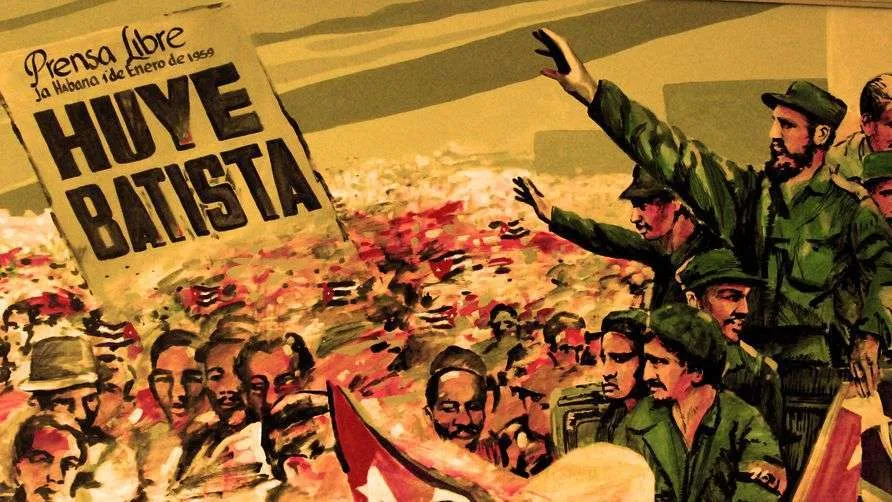Table of Contents
A revolution is not a bed of roses. A revolution is a struggle between future and the past – Fidel Castro
INTRODUCTION
The Cuban Revolution was an armed revolt conducted by Fidel Castro‘s “26th of July Movement” and its allies against the right-wing authoritarian government of Cuban President Fulgencio Batista. The revolution began in July 1953 and continued sporadically until the rebels finally ousted Batista on 01 January 1959, replacing his government with a revolutionary socialist state. Among many other events of mid twentieth century, the Cuban Revolution of 1959 generated a lot of controversy, whether Cuban Revolution was a Communist or a classic Marxist revolt of the workers. The revolution was inspired by the former Soviet Union and provided assistance to establish first Communist foothold near the doorstep of United States of America (USA).
The revolution greatly stimulated USA involvement in Caribbean affairs and posed a great challenge to the USA political, economic and military might. The Cuban Revolution is known as the only post-independence revolution that has not been reversed in Latin America. It is celebrated throughout South, debated in North and is a recurrent theme in US political life. Until today, the effects of Cuban Revolution, through charismatic leadership of Fidel Castro and Che Guevara, still inspire workers and young people worldwide.
The Cuban Revolution of 1959 was a broadly based nationalist insurrection against a dishonored government. Nationalism, patriotism, economic imperialism, poverty and injustice were the main cause of dissatisfaction among the majority of people in Cuba which led people to revolt against the rule of Batista with the leadership of Fidel Castro. It was a revolution facilitated by the long Cuban Revolutionary tradition.
The Cuban Revolution was initiated by people who believed they could change their society and their world. By overthrowing the old, unjust social order and challenging the legacies of colonial rule they could make the history rather than being passive victims of their history. National independence and social justice were the two fundamental goals and they were understood as two sides of the same coin. It was colonial and neo-colonial rule that created the poverty and inequality.
BACKGROUND OF THE REVOLUTION
THE ORIGIN OF THE REVOLUTION
The Cuban Revolution took place in the small islands of Cuba, a country in Caribbean, known for its proximity to the USA and as a point of distress of this superpower. Republic of Cuba consists of one large island and several small islands in Caribbean Sea about 220 kilometers South of Florida, USA. Other nearby countries are Bahamas, Mexico, Jamaica and Haiti. With all its small islands, it comprises somewhat one half of the total land area of West Indies.
One-quarter of Cuba is consisted of mountainous and the remaining area consists of plain lands. Cuba is about 1,250 kilometers long and from 30 to 190 kilometers wide. The Capital is Havana. In the early stages of the conflict, from December 1956 to mid of 1958 the majority of the conflict took place in a mountain range known as the Sierra Maestra Mountains. Many of the revolutionaries were separated in this mountain range, having being attacked by the Cuban Army. Through continuous harassment and successful attack, the Sierra Mountains became under Fidel Castro’s control. In the second stage, from mid-1958 to January 1959, the revolutionaries started their own offensive and moved the conflict towards in urban area which ended with capturing Havana.
KEY CHARACTERS
There were many charismatic leaders involved in the Cuban Revolution. It is important to identify them in order to understand the impact of leadership in Cuban Revolution. Some of the key characters are as follows:
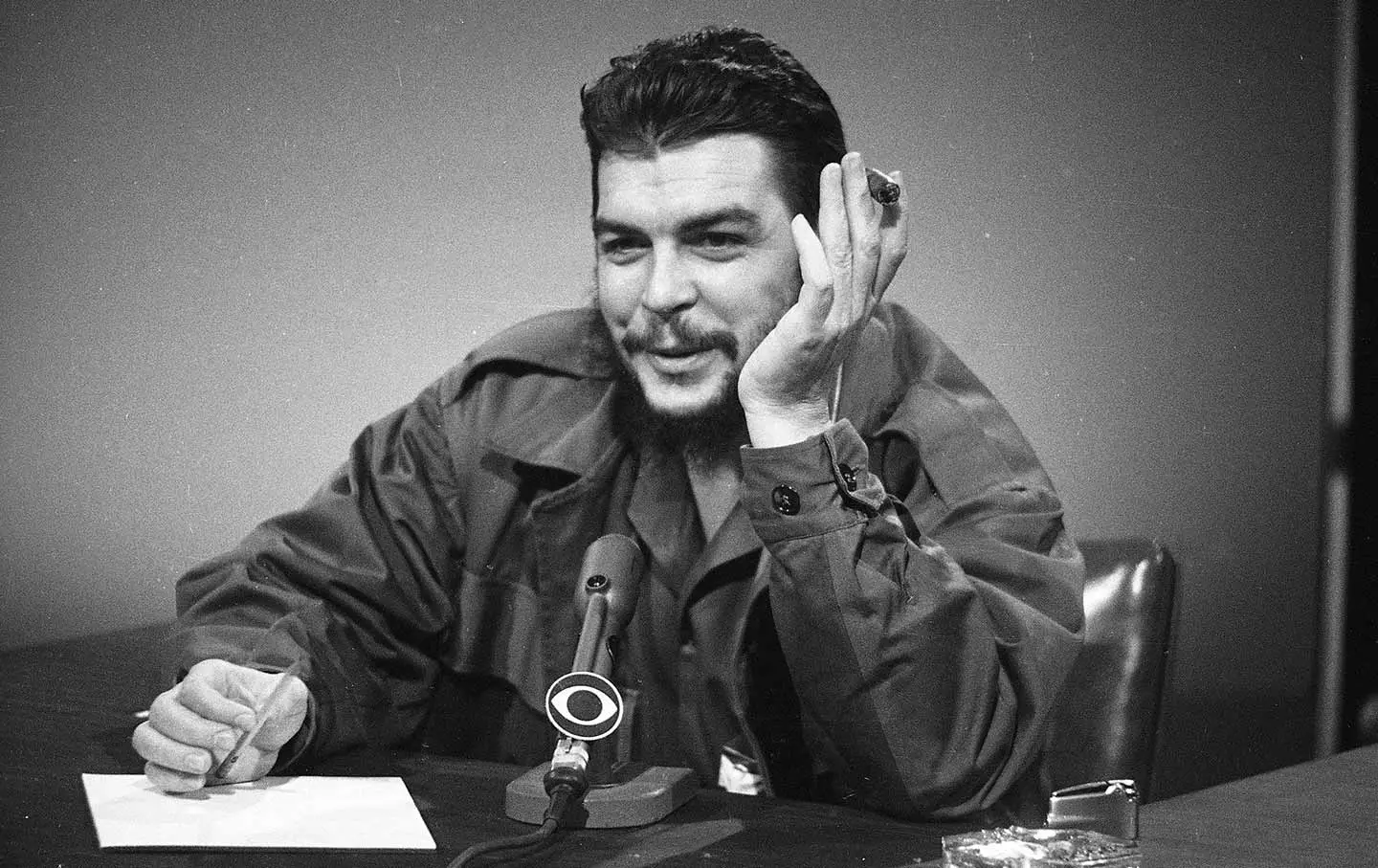
Che Guevara
Ernesto Guevara de la Serna (1928-1967) was an Argentine Physician and a revolutionary who played a key role in the Cuban Revolution. He served in the government of Cuba after the communist took over. Then he tried to prompt up another revolution in Africa and South America. However, he was captured and executed by Bolivian Security Forces in 1967. Even today he is considered as a symbol of rebellion and idealism while others perceive him as a murderer.
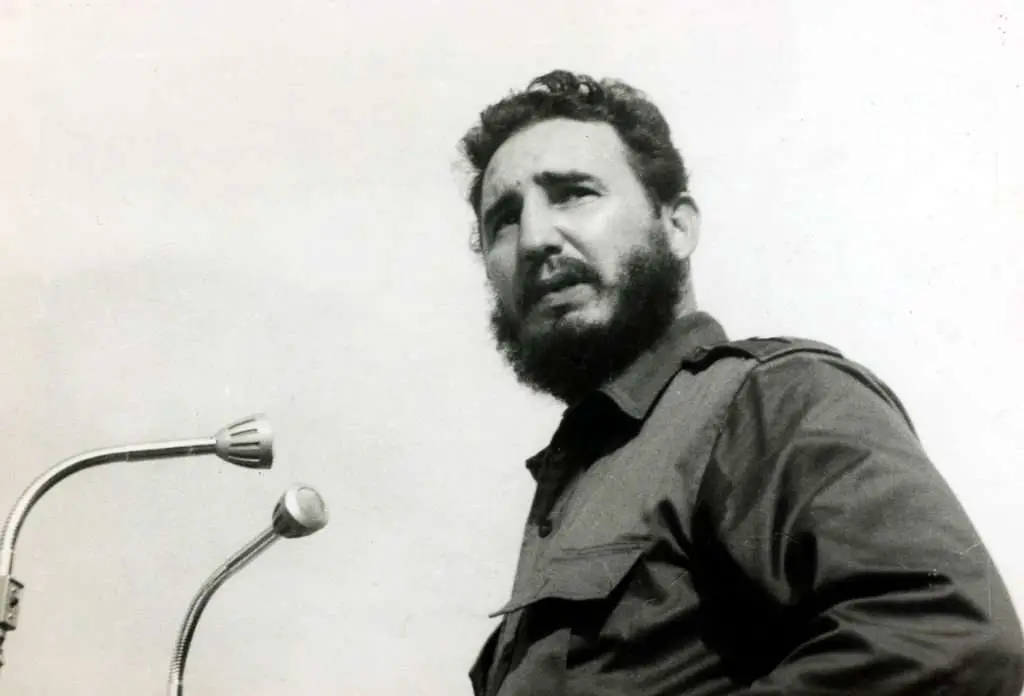
Fidel Castro
Fidel Alejandro Castro Ruz is a Cuban lawyer, revolutionary and politician. He was the central figure in the Cuban Revolution (1956-1959), who led the revolution and removed Dictator Fulgencio Batista from power. He replaced Batista’s regime with the Communist system. He was born in a wealthy farmer’s family and he obtained his early education from a Jesuit high school in Havana where he had displayed an excellent all-round performances. Then he attained his Law Degree from the University of Havana. During his student life, he was influenced by Marxist-Leninist ideology. He died on 25 November 2016 in Havana at the age of 90.
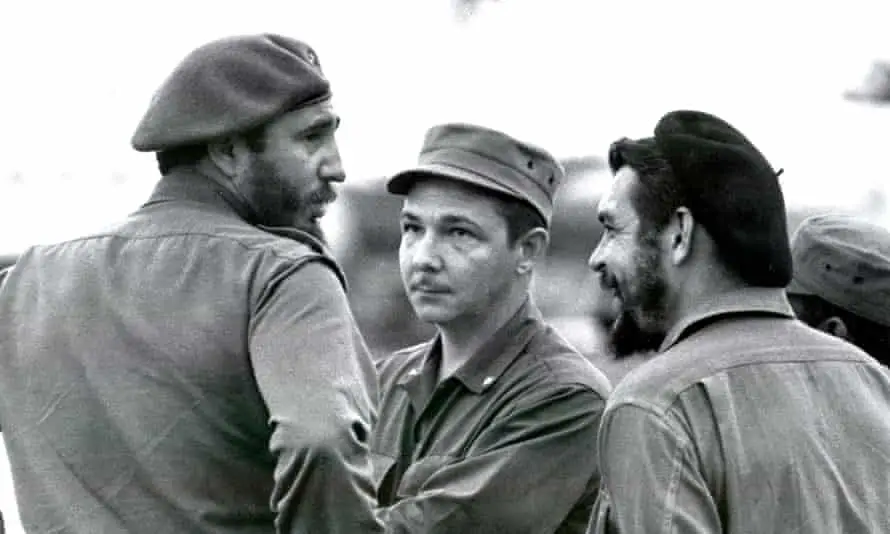
Raul Castro
Raul Modesto Castro Ruz is a Cuban politician and revolutionary who has been the president of the Council of State of Cuba and the president of the Council of Ministers of Cuba since 2008. In year 1953, Raul was a member of the July movement in year 1956 and attacked the Moncada Barracks during the revolution. As a result, this incident kept him in prison 22 months. On 31 July 2006, Raul Castro was designated as the president of the Council of State by a temporary transfer of power due to Fidel Castro’s illness. From year 2011 as the president, he is Commander in Chief of the Armed Forces and has also been the First Secretary of the Central Committee of the Communist Party of Cuba also known as Partido Comunista de Cuba (PCC).
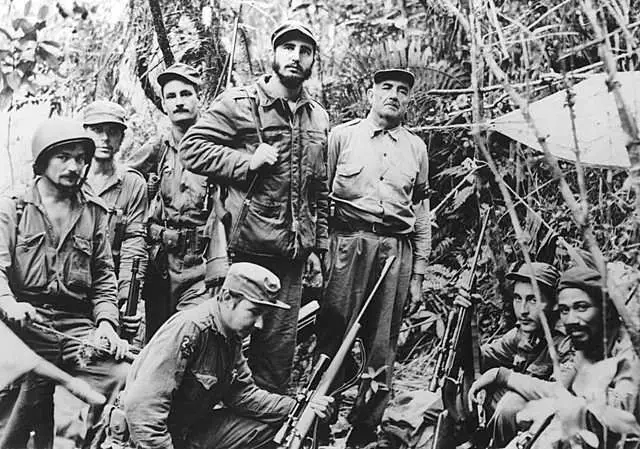
REASONS OF INSURGENCY
On 20 May 1902 Cuba became independent but continual US interference gave Cuba a series of weak, corrupt and US dependent governments. The US intervened military in Cuba in year 1906, 1912 and 1917. By 1920 USA companies owned two third of Cuba’s farmland and most of its mines. The mafioso moved in taking over the casinos, booze, drug running and prostitution. Havana became a fashionable place where USA’s rich rubbed shoulders with mobsters.
Towards the end of the 1920s, Cuba is under its first real brutal dictator Geraldo Machado Morales who increased the worst excesses of his predecessors. By August 1933 Machado was finally removed and escaped into exile the next month an army sergeant named Fulgencio Batista stepped into power, vacuum becoming Army Chief of Staff. Batista ruled Cuba through a succession of puppet presidents until 1940 when he is elected to the post. He saw that he would not get another chance, so withdrew at the end of his period and left Cuba. The average Cuban used to work and live like a peasant without benefits trickling down.
Despite the turmoil, the Cubans have reason to hope that free elections were moving their country towards democratic stability. These hopes were rudely shattered on 10 May 1952, when Batista executed a coup to prevent election in which he was a presidential candidate without prospect for success.
A few weeks after Batista’s 1952 coup in Cuba, young lawyer Fidel Castro filed a case in Havana’s Court of Constitutional Guarantees. He accused the dictator for violating the Cuban Civil Code of “illegally holding the Prime Minister, Senator, Major General, civil and military chief and government officials” demanding that he should be punished for crimes against the constitution. The judges refused his case. Then 25 year old lawyer, Fidel Castro began to make his plans for revolution.
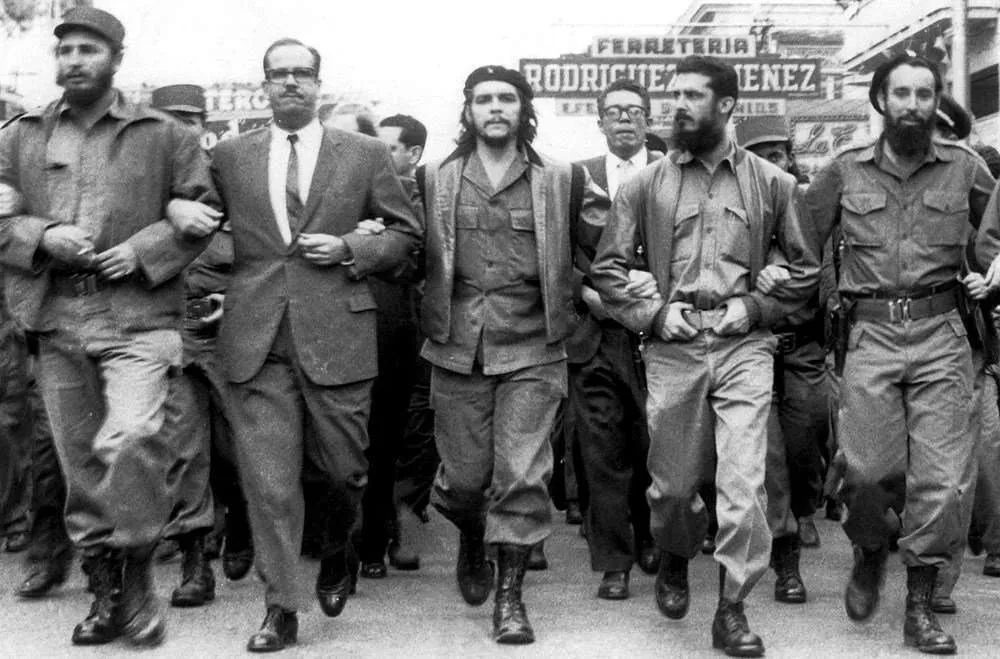
HOW REVOLUTION WAS CONDUCTED
26 JULY 1953 MOVEMENT
The Cuban Revolution began when well-armed rebels attacked the Moncada Barracks in Santiago and the barracks in Bayamo on 26 July 1953. The exact number of rebels killed is debatable; however in his autobiography, Fidel Castro claims that five were killed in the fighting and an additional 56 rebels were killed later by the Batista regime. Among the deads Able Santamaria Second-in-Command of the assault on the Moncada Barracks who was imprisoned tortured and executed on the same day as the attack.
The survivors among them Fidel Castro and his brother Raul Castro were captured shortly afterwards. Fidel Castro was sentenced to 15 years in the Presidio Modelo prison, located on Isla de Pinos, while Raul was sentenced to 13 years. Later on in 1955, due to pressure from civil leaders, the general opposition and the Jesuits who had helped to educate Fidel Castro and perhaps because he had known the Castro brothers in their youth. Batista freed all political prisoners including the Moncada attackers.
FORMING OF REVOLUTIONARY FIGHTERS
After releasing from jail, Fidel and Raul Castro went to Mexico to regroup and plan the next step of the revolution. There, they met up with many disaffected Cuban exiles who joined newly and “26 July Movement” named after the date of the Moncada assault. Among the new recruits charismatic Cuban exile Camilo Cienfuegos and Argentine doctor Ernesto ‘Che Guevara’ were there. Castro and Che were greatly influenced by Alberto Bayo who was a native Cuban and whose manual ‘150 Questions to a Guerrilla’ was widely read. Castro and his revolutionary band received training from Bayo.
RETURN BACK TO CUBA
Castro announced to the world that he would return to Cuba. In November 1956 eighty two Cuban rebels piled on to the small yacht “Granma” and set sail for Cuba to touch off the Cuban Revolution. On 02 December 1956 and the Cuban rebels including Fidel and Raul Castro, Che Guevara and Camilo Cienfuegos disembarked to start the revolution.
PROPAGANDA MISSION
Their propaganda mission was also very effective. Sierra Maestra appeal for the uprising was reported in the Havana press. A correspondent of the prestigious American news “The New York Times” was smuggled up to Fidel’s hideout in the mountains, in which he wrote a series of articles which glorified the discipline, bravery and the commitment of the rebels. These articles received international status overnight and supported for his movement, both from home and abroad. In the months and years ahead, the number of his followers grew slowly.
The peasants of the mountains came gradually to support him and word of his movement filtered into the slums of the cities. Acts of insurrections by Fidelistas grew more numerous and Batista’s counter revolutionary measures grew increasingly brutal. Radio broadcasts were also initiated in February 1958 by the rebel army’s media wing, under Guevara’s supervision. Guevara had reportedly been impressed by the power of radio after experiencing firsthand the role of a Central Investigation Agency clandestine radio station. They began nightly broadcasts from the Territory of Free Cuban in the Sierra Maestra.
COUNTER INSURGENCY OPERATIONS BY BATISTA’S GOVERNMENT
In May 1958 Batista announced that he would exterminate Fidelistas and its leader. Batista’s approach to combating the insurgency soon formed into two objectives. First to contained and then defeat the guerrillas in the mountains and second to maintain law and order in the cities. 12,000 men armed with the newest equipment marched into the Sierra Maestra. The odds were 40:1- Batista’s 12,000 soldiers against Castro’s 300 men. It was named as ‘Operation Verano’. The first attack was on 28 June 1958 with an attack that moved out of the Estrada Palma Sugar Mill. This attack was halted by an ambush from Che Guevara’s troops. Armoured cars that moved off the road ran into a previously laid mine field. The Army began to retreat while Che’s troops continued to fire at them. The Army lost 86 men, Che’s troops lost 3 rebels.
BATTLE OF LA PLATA
On 11 July 1958, the army landed the 18 Battalion at the mouth of the La Plata River. This action is sometimes called the Battle of La Plata. The idea was to surround Castro’s mountain defences at Turquino Peak. After more than a week, on 21 July 1958, the 18 th Battalion surrendered and the end result was 40 men died, 30 got wounded and 240 became prisoners. The insurgent troops lost just three of their own men.
BATTLE OF LAS MERCEDES
The Battle of Las Mercedes (29 July 1958 – 08 August 1958) was the last battle of Operation Verano, the summer offensive of year 1958 launched by the Batista government during the Cuban Revolution. The battle was a trap, designed by Cuban General Eulogio Cantillo to provoke Fidel Castro’s uerrillas into a place where they could be surrounded and destroyed. Castro’s troops, for the first time, were caught by the trap and more than 70 were killed in the first two days of fighting, including a senior rebel leader, Rene Ramos Latour. Castro managed to get his army out of the trap by opening negotiation with General Cantillo and Batista. By 08 August 1958 all of Castro’s forces had escaped and the government’s offensive was over.
OFFENSIVE OPERATION BY THE INSURGENTS
It seemed to the Fidelistas that only way to win decisively was to come down from the mountains. In August 1958, Che Guevara began to lead 300 veteran fighters on a grueling march westward across two-thirds of the island, aiming to cut communication between East and West. They moved at night constantly fending off government troops. Five months later they reached the city of Santa Clara; it fell on 29 December 1958. An armed train, sent by Batista to reinforce supplies of ammunition, weapons and other equipment travelled along to the foot of the hill of Capiro, Northeast of the city, establishing a command post there. The capture of train and the subsequent media broadcasts from both the government and the rebels proved to be a key tipping point in the revolution.
Meanwhile, on 25 December 1958, Castro’s Sierra Maestra troops marched into Santiago, the key city of Orient province. Throughout the island bands of guerrilla fighters blew up army installations and harassed Batista’s troops. Most garrisons around the country quickly surrendered to the first guerilla commander who showed up at their gate. News of these defeats caused Batista to panic. He fled Cuba for the Dominican Republic just hours later on 01 January 1959. Castro learned of Batista’s escape and immediately started negotiations to take over Santiago de Cuba. On 02 January 1959, the military commander in the city, ordered his soldiers not to fight and Castro’s forces took over the city. The forces of Guevara and Cienfuegos entered Havana at about the same time. They had met no opposition on their journey from Santa Clara to Cuba’s capital. Castro himself arrived in Havana on 08 January 1959 after a long victory march.
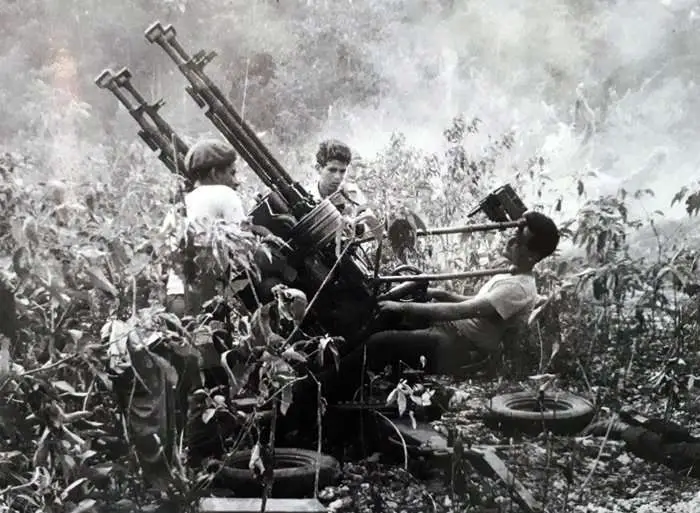
ANALYSIS OF THE INSURGENCY CAMPAIGN
The Cuban Revolution was neither an agrarian rebellion, nor it was an opposition movement or a people’s war. Liqueur Walter has mentioned that the key to the victory of Cuban Revolution was his enemy and rivals. Virtually, there was no resistance; the middle class, the church and the foreign supporters deserted Batista. The key to victory was political not military.
Therefore analysis could be done in both aspects of Insurgency and Counter Insurgency since Cuban Revolution was one of the rare incidents where the revolutionaries became successful, therefore we can relate and visualizes more relevant factors of Insurgency such as abiding features, factors affecting Insurgency, Insurgency tactics and also the some limitations of Insurgency through this Insurgency campaign. In this analysis we will unfold by covering Factors Affecting Insurgency, Abiding Features, Insurgent Tactics and Weak Points of the Insurgency and at last, Analysis of Counter Insurgency Operations by Batista’s Government.
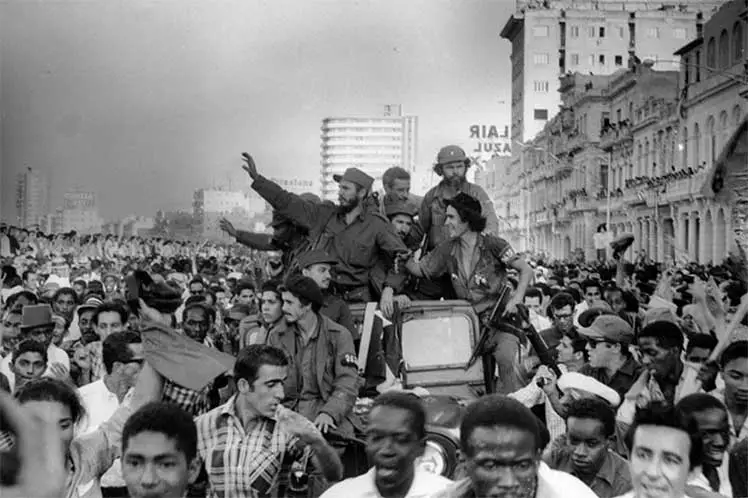
FACTORS AFFECTING INSURGENCY
The Cuban Revolution is one of the classic examples for a successful insurgency campaign. The success was guaranteed due to the strategies they adopted to run the campaign and careful manipulation of factors affecting insurgency. Further, this detail analysis systematically gives how each factor has affected to confirm the success of the campaign. Those factors are as follows:
- Protracted war Although the protracted war is one of the effective strategies to win a Counter Insurgency campaign, the Cuban Revolution did not last too long as some other insurgencies in the world. This fact eventually helped to preserve both lives of Cuban people and resources during and particularly after the conflict. It is important to note that, not like in other insurgencies, rebels demonstrated their capability by bringing the campaign from rural to urban environment very easily. The duration took for that process was relatively low as far as the other contemporary campaigns are concerned. The non-continuation of the violent struggle resulted to accumulate the popular support more rapidly and instantly. Therefore, collateral damage was minimized and discomfort caused due to campaign in normal Cuban lives was acceptable.
Intelligence The intelligence plays a vital role in any form of warfare. The utilization of the intelligence in the insurgency campaign was excellent. The rebels were able to gather as much intelligence as they could on the movement and the deployment of the Batista’s forces. The tactics adopted to gather intelligence were through captured soldiers of Batista’s Army and sympathizers of revolutionaries.
Choice of Terrain It can be seen that as in many insurgencies, the Cuban Revolution also started from a remote area where the government forces presence was minimum and which gives enough freedom of action to carry out their preparatory activities. Most significantly, rebels could achieve the success in all operation conducted in Sierra Maestra mountains. The insurgents brought government forces to very unfamiliar and unfavorable ground which enhanced the capability of destroying the Batista’s forces easily.
- Establishment of an Alternative Society The aim of the Cuban Revolution was to change the existed political order and to introduce communist system. The aim was successfully achieved by overthrowing Batista’s Regime. The revolution brought a much needed change to the system of the society which ensured the rights of all Cuban citizens.
- External Support It is important to gain external support for conducting an insurgency campaign successfully. It facilitates to acquire new weaponries and technology in order to combat with sophisticated state forces. Getting support from one of bordering countries is very much important to conduct training, organizations of activities, money collection and arms collection and to use as a safe haven to control actions. During the regrouping they got support of Mexico, Chinese and United States of Soviet Russia.
- Concurrent Activity The Cuban Revolution is not only a military struggle which launched to overthrow puppet Batista’s regime. It encompassed number of activities such as political and social activities which expedite the victory of the revolution. The organization and synchronization of military activities with other activities both in rural and urban areas were commendable.
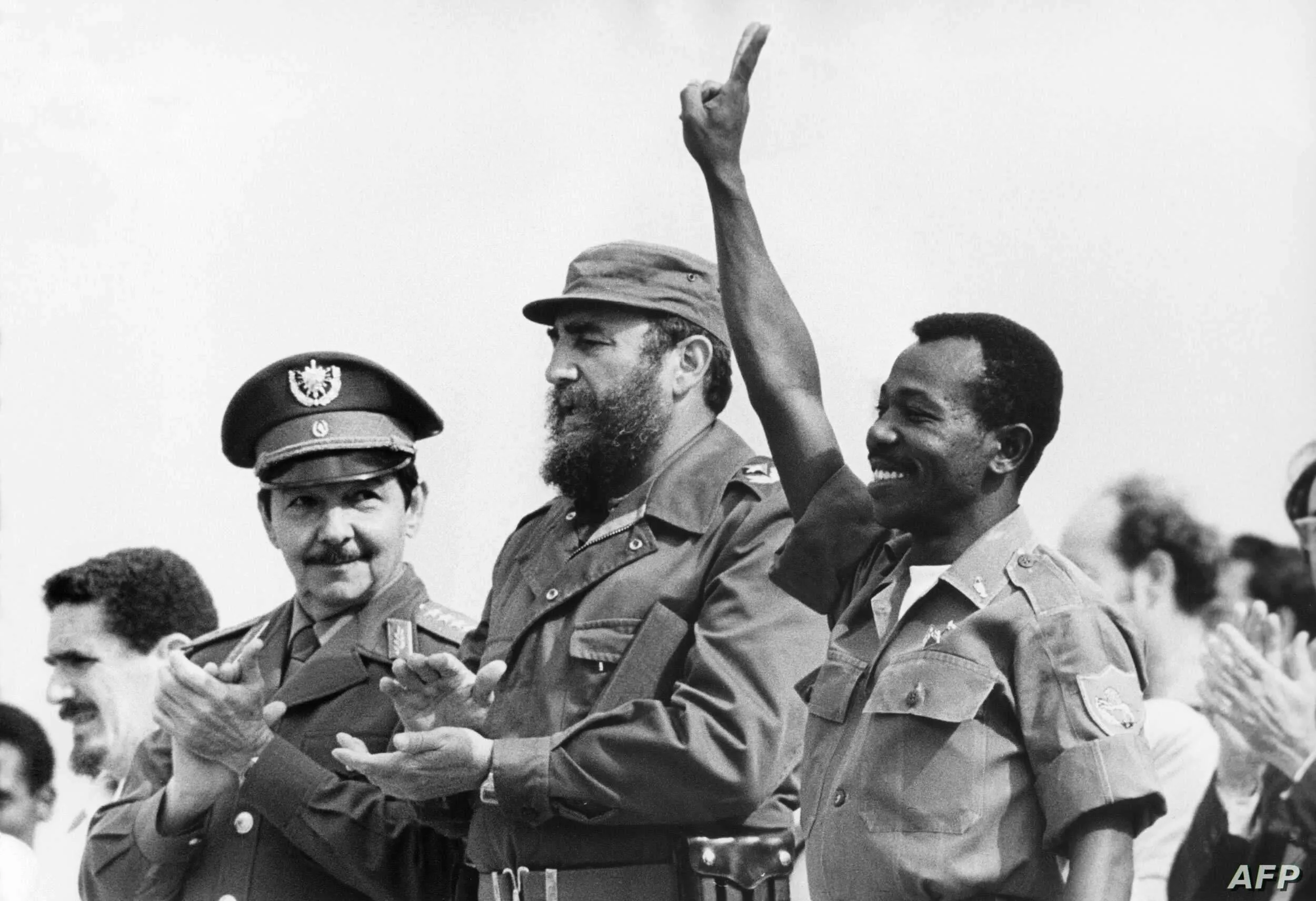
ABIDING FEATURES
During this analysis, it was clearly observed that there were four abiding features governed throughout the campaign. A strong cause, charismatic leadership, vast popular support and good set of organization were clearly present with the Fidelities. How those abiding features were supported to the Fidelities is discussed as follows:
The Cause
Castro had appropriately identified the causes for staging revolution against Batista. He exploited the cause of Nationalism. People were mostly stressed by long reign of dictatorship. People were suffered more on maladministration. This situation facilitated to exploit the causes for Insurgents. People were eagerly waiting for a change in political scenario. The facts that led towards the right cause for revolution were as follows:
- Batista violated the Civil Code, illegally had been holding the offices of “President, Prime Minister, Senator, Major General, Civil and Military Chief”. Castro discovered this corruption and autocracy of Batista government to every Cuban’s eyes.
- Poor civil liberties and rural improvement programes and lack of industrialization.
- Poor reforms for agricultural production, specially the low prices paid by the USA for sugar.
- Partial profit sharing between shareholders and workers.
- Exploitation of Cuba by the USA specially making it a pleasure ground by US businessmen.
Leadership
In the analysis it was clear that effective and charismatic leadership was one of the prime key for success. Castro’s leadership was the blend of undoubted courage and personal magnetism. Castro dared to challenge the dictator to discover his and everyone else’s astonishment how brittle the regime was and how near to collapse. It is doubtful whether any of Castro’s companions had the qualities to lead the rebels from Sierra to Havana. It was reflect of Castro’s wisdom not to come out openly as a Marxist-Leninist from the beginning of war. If he would have done so, the rebels would not have been able to get down the plains.
The Castro, who had landed in Cuba was certainly not a Marxist-Leninist, but a radical who could have moved ‘left’ or ‘right’ with equal ease. On the other hand their next leaders were also an effective on ground. We can’t forget charismatic personality like Che Guevara and silent but an efficient leader like Raul Castro. They immensely supported Fidel Castro’s plan. Castro’s officers and men showed infinitely more fighting spirit, initiative and intelligence than their opponents. There was no overall plan or strategy on the part of Castro; neither he nor Guevara had read Mao at the time. If anything, they were guided by the experience of nineteenth-century Cuban guerrilla warfare with the exploits of Antonio Maceo and Maximo Gomez. These heroes of war of independence provided inspiration for the fighters in the Sierra Maestra. It was fought under the pure spirit of patriotism, national duty and of freedom from oppression and corruption.
Popular Support
During the analysis it was clear that the Insurgents had immense popular support. From the beginning of the campaign Castro had been maintaining the following certain principles which led him towards immense popular support:
- Castro laid a lot of emphasis to win the hearts and minds of the people and successfully subverted the people’s mind against the government.
- Thorough broadcasting of radio advertisement and circulation of an articles written by Castro in the newspapers also had a great impact on gaining popular support.
Organization
Because the revolutionaries had good base of leadership, but their manpower was very less. So they had to bear with the limitation of an organization. But analyzing their operations it was clear that the task was given accordingly and the goal was well defined which we can say as a result of good organizational structure among the followers. In subsequent action they organized systematically and that led to establish the new alternative government in Cuba.
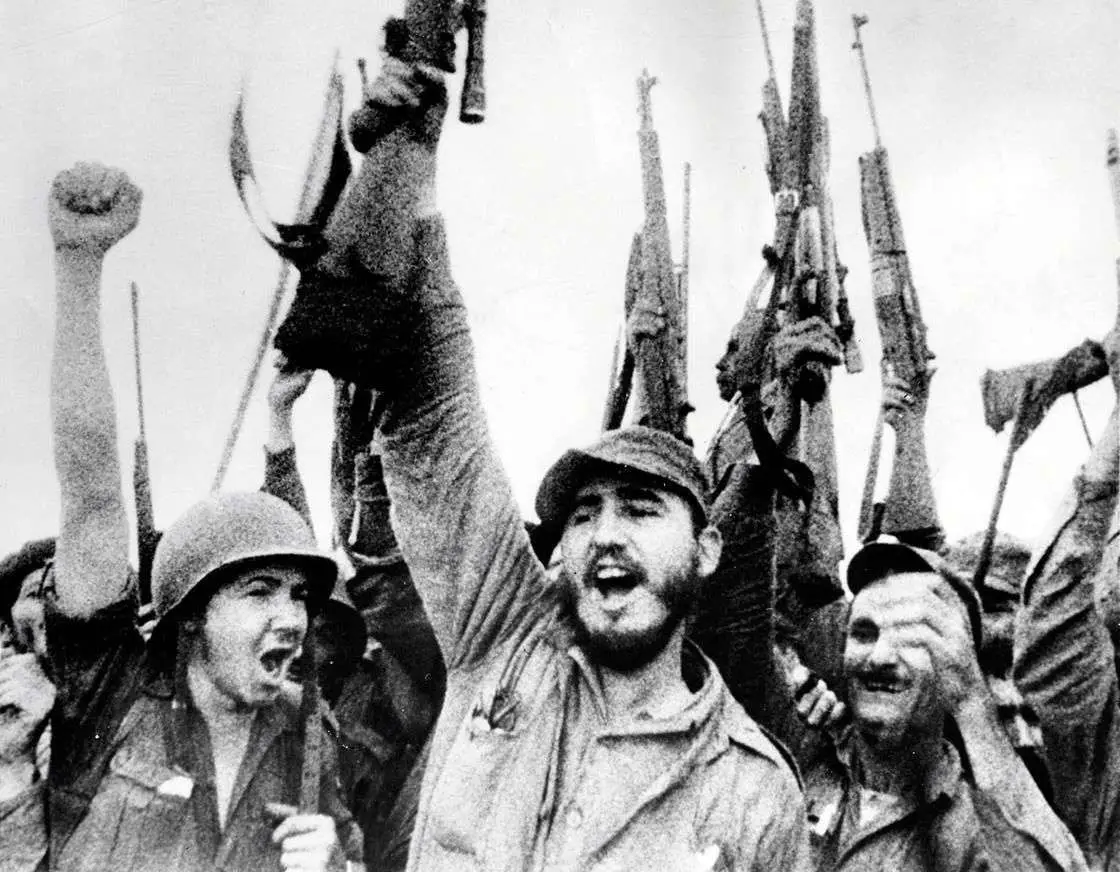
INSURGENTS TACTICS
If we give a view on the tactics followed by the insurgents in this Cuban Revolution it is clear that at the first they ensured primary support among the rural peasantry by promising reform, then they launched revolutionary movement throughout both the rural and urban regions of the entire country, ultimately allowing for a successful general strike against Batista in 1959 and bringing Castro to power. So, in the analysis we have touched both rural and urban tactics followed by the insurgents.
Tactics in Rural Area After reaching from Mexico the revolutionaries established their bases in areas distant from government control. So the government was compelled to deploy security forces in a larger scale. There they had established bases and ensured their supplies by the local population and only used the local resources that are very clearly the insurgents ideally follow in rural area. To have an advantage against superiority of arms and numbers of the government forces, they selected the wild terrain for the fighting.
Besides, the fighting they also carried out training camps to train the insurgents in the rural areas. The training they conducted was implied with the vision of revolutionary spirit. In reply of the counterinsurgency operations and to make the security forces disorganized they mostly depended on hit and run tactics with a view to achieve surprise. Their blows were continuous to prevent government forces from reorganizations. Again they didn’t adopt terrorism as a mean to gain popular support.
Tactics in Urban Area The insurgentsbelieved the urban area as grave yards but they conducted their operations focusing on damaging the economy and compelling the government to pay compensation. In the process they discouraged the security forces by capturing the military installations. They attacked and captured security forces re-enforcement logistic supply train with arms, ammunition which in one side affected the morale of the security forces. Again they publicized the incident informing the inefficiency of the security forces to gain publicity which indicates about their efficiency in psychological operations too. But it’s clear that, though they had option they didn’t take assassination of public figure as a way to inflict pressure on the government. They also didn’t use the mass population for protest or marches against the government.
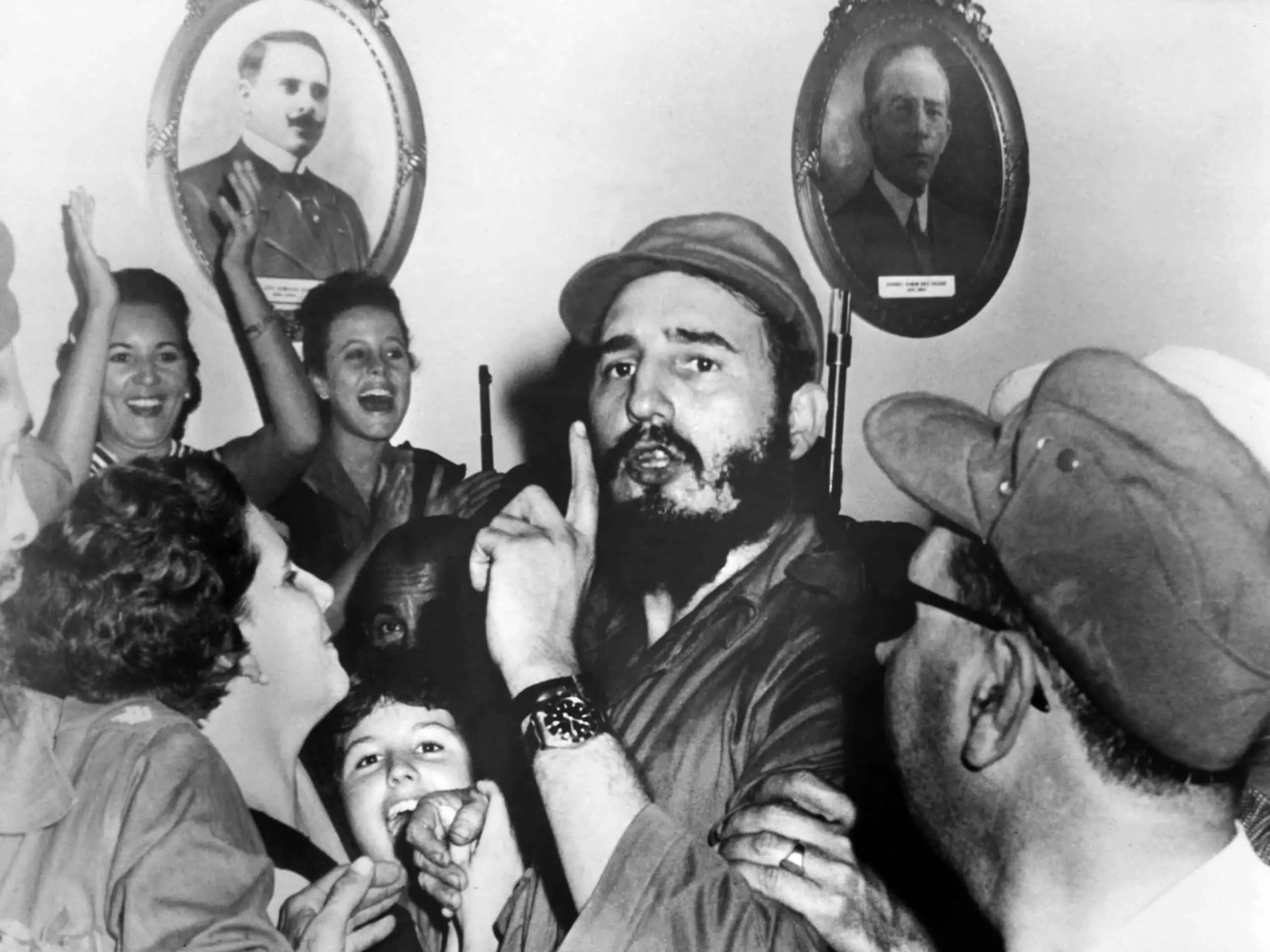
ANALYSIS OF COUNTER INSURGENCY PRINCIPLES
As the insurgents were successful against the security forces it is clear that the Counter Insurgency campaign by Batista was failed. Therefore, it is pertinent to analyze the reasons to fail under the Counter Insurgency principles. Among six principles, only four principles can be analyzed due to the failure of Counter Insurgency operations as follows:
Political Primacy and Political Aim. Batista’s government failed to maintain simultaneity with the political and social challenges. He only followed the military as the one and only option which proved faulty at the end. Other than that USA imposed restriction on arms trade that accelerated Batista’s defeat. It weakened Batista in both politically and militarily. Since Batista did not have any political aim he had to step down against the revolution.
Coordinated Government Machinery. Batista was a weak and ineffectual dictator, cruel to the large sectors of the population, not effective to suppress the revolutionary movement. Cuba had a long record of political violence and guerrilla warfare. The police and army were underpaid and demoralized, corrupted and internally divided. Therefore, Batista failed on coordinating government actions effectively. Batista’s coup in year 1952 was by no means inevitable. It was important for the interest of his survival, to strengthen and modernize the police and the military establishment. He failed to realize it and virtually did nothing.
Intelligence and Information. Batista never realized the threat of Castro’s insurgency. He failed to detect the will of the insurgents and break it. It appears that he initially saw Castro as just another rival for political power, who although popular, had no widespread base of support among the Cuban population. His failure in acquiring intelligence on the insurgency straight way paved the path to unsuccessful Counter Insurgency operation. Batista failed to gain sufficient intelligence regarding insurgents for what he couldn’t get the targets of the insurgent’s bases. For that, the insurgents carried out their activities without obstruction. Having continuous broadcasting of their radio station is one of the burning issues. His effectiveness on neutralizing insurgents was very low.
Separating the Insurgent from his Support. The regular armed forces and the Rural Guard Corps were given the primary responsibility of combating the guerrillas in the field. Their tactics were military oriented, conventional and largely ineffective. The rebels seldom defended the terrain over which they fought; they merely withdrew. Their conventional tactics against the insurgents was a huge mistake. On the other hand Batista didn’t have any mechanism to separate insurgents gaining support from the population. Due to his long dictatorship, majority of Cuban population was against him. Therefore, he missed the popular support to separate or detect the insurgents. Batista failed to utilize the resources available to face the insurgents. He was failed to coordinate government machinery to fight the insurgency.
When analyzing the Counter Insurgency Operations conducted by Batista’s government, it was not effective. Use of principles and basics were minimal and also failed in employment of military forces in to the campaign. Prior to the lessons of weaker government could be easily failed in facing insurgency, Batista’s government too experienced an utmost failure.
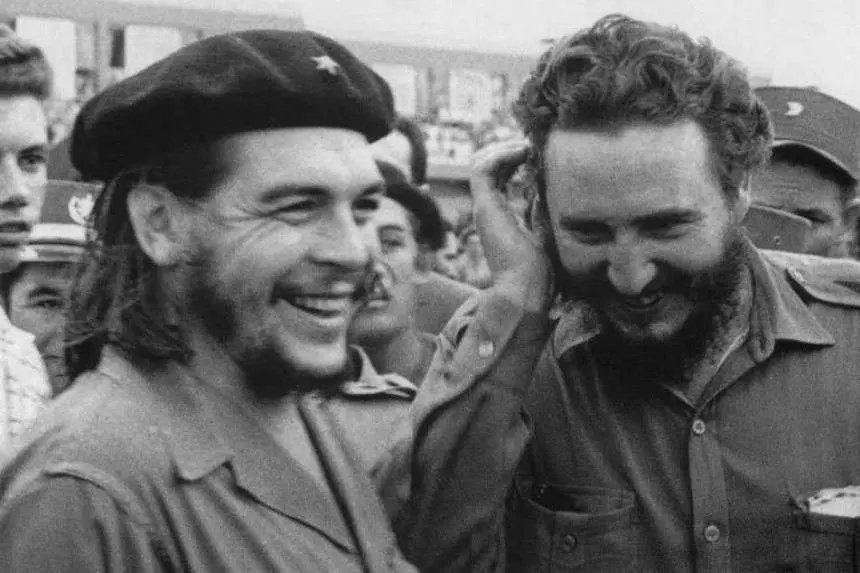
LESSONS LEARNT
The overthrow of Batista regime in Cuba came as a result of protracted insurgency, directed by professional revolutionaries who disclosed their Marxist beliefs only when established in power. It is this twist which distinguished Castro’s from the May Revolution, which preceded it in the island’s history. The Cuban Revolution remains a unique example of revolutionary warfare. Lessons which can be derived from the Cuban revolution are described in the subsequent paragraphs as follows:
National Plan
Batista’s government did not have a clear plan to combat revolutionaries effectively. The government should have taken into account of the deteriorating situations and take preparatory actions to formulate a National Counter Revolutionary Plan. Any successful national plan involves development and use of the political, economic, psychological and military potentials of a government to prevent and defeat insurgency. Castro’s revolutionary operations defeat was not possible because of lack of national policy.
Good Governance
Any permanent solution must be based on a good governance by an administration that is aware of and is sympathy with the aspirations of the mass of the people. Batista’s name became synonymous with corruption and repression and his government was not aware of the people’s aspirations. The legal government must be firmly established and be seen to govern. The establishment of sound, uncorrupted, central and regional government is very essential for sound administration.
Popular Support
In a successful Counter Insurgency campaign it is important to isolate the insurgents from the population. A government must be able to convince its population that it can offer a better solution, better government and better life than the opposing insurgents can. Batista’s government lacked popular support and ineffectively tried to win the support of the people. On the other hand, Castro enjoyed popular support especially in the rural areas and among the middle working class in urban areas. In Cuba, it was proved that popular desire is one of the basic essentials for the growth of an insurgency.
Good Leadership
Effective and strong leadership is a basic requirement to counter revolutionary warfare. Batista had 12,000 strong army, armed with advanced equipment against Castro’s army which had grown to 800 men. To counter the superiority of arms and number, the revolutionaries had only the wild terrain. But it was the effective and charismatic leadership of Castro which guided the Fidelistas rightly towards the path of victory.
Prevention of External Support
Without external support and assistance and a safe heaven in which the insurgents can trained, organize and equipped, insurgency would rarely succeed. Castro was taking full advantage of the situation in Mexico in his favour and Batista failed to neutralize the external support.
Training
Counter Revolutionary Warfare in its phases and forms demand a higher standard of training than any other form of warfare. All soldiers must be capable of sustained physical effort over long periods in circumstances, which includes both psychological and physical obstacles. Batista’s troops had no special training to fight against Fidelistas and the lack of physical and mental strength made the government soldiers to give up. Whereas insurgents were well trained and highly motivated.
Counter Revolutionary Tactics
Batista’s force used columns of men, vehicles and sophisticated equipment to combat cunning, mobile and unseen enemy. Batista’s strong patrols armed with tanks and Air Forces could not succeed. The ground troops were encircled by the revolutionaries and the air force failed to achieve decisive result. The conventional tactics used by the government forces were exploited to the maximum by the guerrillas and Batista failed to realize the fact. Thus the guerrillas fought in land while counter forces fought from the air.
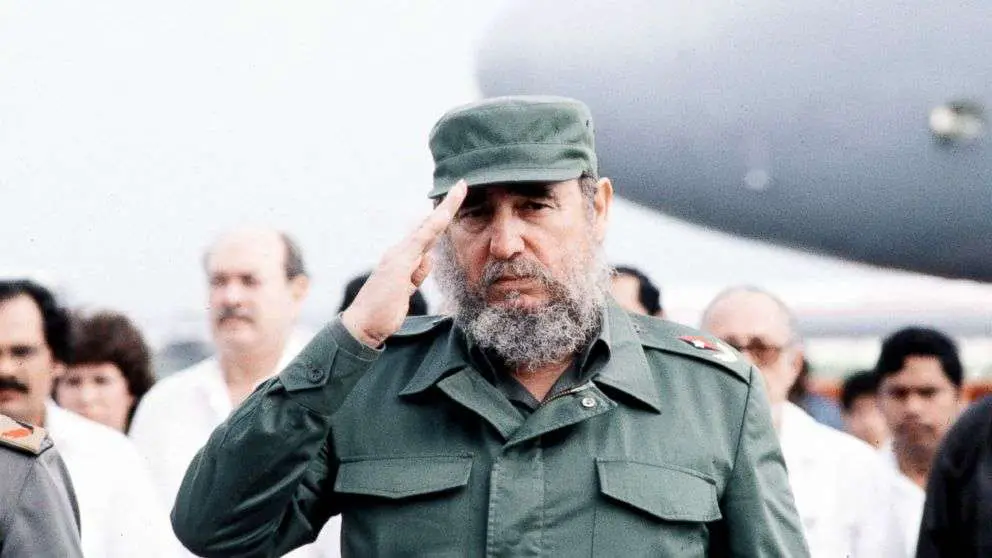
CONCLUSION
The background situation that prevailed during the reign of Batista’s was quite favorable for the insurgency. Though Batista was in power twice earlier, after the military coup it was not well accepted by the mass population. Initial form of government countering the insurgency was to surround them in rural areas and destroy them. Batista’s operations were military in nature and lacked political maturity. In addition to these, the period experienced constitutional and political crises and was high with low government morale.
The fundamental causes responsible for the insurgents were many. Among them the main issues were diversity in trade, poor administration, unbalanced economy, constitutional reforms and of course rise of nationalism among population are worth mentioning.
The Cuban Revolution is one of the successful ones in today’s history. Initially, the threat from insurgents was disorganized. However, later the incorporation of effective leadership from Fidel Castro and Che Guevara made the differences. Analysis of the government towards this dispute and security forces failure was responsible for the ultimate result. The main reasons were leadership of insurgents, massive popular support for the insurgents, government’s failure in separating the insurgents from the population, winning the hearts and minds of people by the insurgents, development programmes and media campaigns by the insurgents and finally effective guerrilla tactics of the insurgents.
The revolt started with the assault on the Moncada Barracks on 26 July 1953. It was ended when Batista forced to leave the country. Long-lasted revolution fought for 05 years 05 months and 06 days which ended on 01 January 1959 by extending happiness to the millions of Cuban people at that time.
(Free to reuse with the credits to www.shutterbulky.com)
Sources:
Insurgency, Theoretical Decolonization and Social Decolonization: Lessons from Cuba
Fernando Lacerda (Faculty of Education, Federal University of Goiás, Goiânia, Brazil).
Knowing the Place for the First Time: A Cuban Exile’s Story (Alejandra Morena).
Review of the Tragedy of Fidel Castro by Joao Cerqueira.
Socialist Cuba (Sergio G Roca).
Cuban Presence in the Caribbean (Barry B. Levine).
www.history.com/this-day-in-history/batista-forced-out-by-castro-led-revolution.
www.coldwar.org/articles/50s/TheCubanRevolutionof1959.asp.

